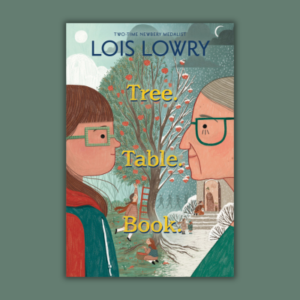
Review By: Stephanie Kenific from Solvay High School
Title: An Emotion of Great Delight
Author: Tahereh Mafi
Published: 2021, Storytide
Genre: YA Fiction, Realistic Fiction
Audience: 9, 10, 11, 12
Triggers: Language; Self-harm; Grief
Goodreads Review: From bestselling and National Book Award-nominated author Tahereh Mafi comes a stunning novel about love and loneliness, navigating the hyphen of dual identity, and reclaiming your right to joy–even when you’re trapped in the amber of sorrow. It’s 2003, several months since the US officially declared war on Iraq, and the American political world has evolved. Tensions are high, hate crimes are on the rise, FBI agents are infiltrating local mosques, and the Muslim community is harassed and targeted more than ever. Shadi, who wears hijab, keeps her head down. She’s too busy drowning in her own troubles to find the time to deal with bigots. Shadi is named for joy, but she’s haunted by sorrow. Her brother is dead, her father is dying, her mother is falling apart, and her best friend has mysteriously dropped out of her life.
And then, of course, there’s the small matter of her heart–It’s broken. Shadi tries to navigate her crumbling world by soldiering through, saying nothing. She devours her own pain, each day retreating farther and farther inside herself until finally, one day, everything changes. She explodes.
An Emotion of Great Delight is a searing look into the world of a single Muslim family in the wake of 9/11. It’s about a child of immigrants forging a blurry identity, falling in love, and finding hope–in the midst of a modern war.
Review: I have no memory of choosing this book, but something about the description must have appealed to me. Beautiful writing about a damaged family and hurting young woman.
An Emotion of Great Delight follows Persian-American teenager Shadi over the course of several days. Shadi’s family is still reeling from her brother’s death, for which Shadi blames her father who is now ailing in the hospital. Shadi’s mom becomes increasingly unavailable and exhibits concerning behavior. Mostly, Shadi just tries to keep it together as her family life grows more and more untenable. A former flame, Ali, complicates matters by reappearing in her life after his sister (Shadi’s former best friend) starts ignoring Shadi. Torn by her attraction to Ali and her desire not to reengage with Zahra, Shadi does her best to simply be alone in the depths of her feelings.
Something about the author’s prose is really beautiful; the word choices that weave together dramatic scenes are well-crafted and heavy with meaning. There is also a great deal of diversity within the Muslim community that Mafi depicts. While Shadi’s family is super dysfunctional, her former friend’s family is shown to be close-knit and caring. Another of Shadi’s new friends is half-Black and half-Persian.
I did not ultimately enjoy reading this book, primarily because very little happened in it. Each scene was a remix of the one before it: Shadi tries to keep it together, Shadi is reminded of the trauma in her life, Shadi faints or otherwise falls to pieces, Ali turns up and asks Shadi to communicate with him, and Shadi runs away. I don’t think most students would be interested in reading this book, but I could see it being relevant to a subset of people: students who are Middle Eastern and want to read books that are about Middle Eastern families in America and people who are dealing with grief.



